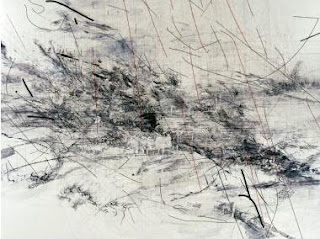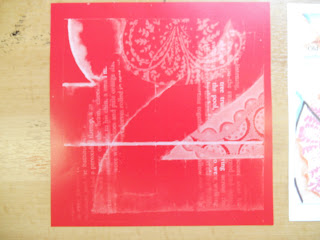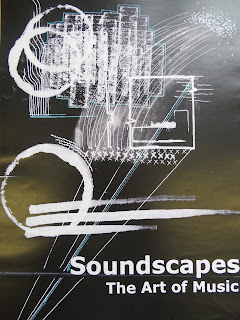Research opportunity Julie Mehretu shows similar styles to the overlapping images we had looked at previously. I really like the messy, abstract style she incorporates. The pieces show little direction and leave the mind wondering.
Sunday, 16 October 2011
Pathway: CMTF
HYBRIDISATION: You will be introduced to 3 approaches to drawing, using light sources and multiple images. Introduce the role that light plays in influencing the appearance and meaning of a subject, and the related methods of recording subjects and objects through drawing.
Produce a series of experimental drawings using these processes using a range of media. You will be asked to analyse and evaluate your ideas and show that you have an understanding of how light can influence appearance and meaning in drawing. Investigate the work of artists who explore the use of light in their work.
1. Layered drawings on tracing paper, using drawing templates and hand drawn marks. These drawings will be subsequently 'flattened' by photocopying or scanning and manipulating in Photoshop.
2. Use a slide of a projector with doubled up slides. (you will be shown how to produce your own miniature images to use in conjunction with 'found' slides)
3. Use an overhead projector with multiple acetate images.
Pathway: Visual Communication
WEDNESDAY: Using the materials that you have brought with you, along with those provided you are required to consider in more detail the colour, texture, tone and scale of the work you produced on Monday. By using this work as a starting point, you will now produce a series of 6 abstract or typographic collages in which you should consider composition in more detail.
We would like you to explore the relationships between the materials you use and consider the possibilities of the design process (use photocopier/computer etc).
Think about scale, amount of elements and the use of space within your compositions, be selective and be creative with your use of shape, line, colour and media.
FRIDAY: You are required to create imagery for a book cover utilising the media and working methods you have employed so far this week. You will have to work within a given set of dimensions plus the addition of an element of type in the form of the book title. You will be supplied with a template on acetate to work with. Remember all that you have learnt so far about line, shape, colour and composition, look back on previous studio work for inspiration and utilise this in the production of your book cover.
Pathway: Visual Communication
DRAWING & MEASUREMENT: To produce systems of measurement in observational drawing that lead to an ability to translate 3D Subjects into 2D Linear drawings.
MONDAY: We would like you to use the letter forms and stencils provided to look at line. Study the letter forms closely and begin to deconstruct them, start to see them as three-dimensional shapes, explore the curves, the straight lines and the angles that make up the letter forms. You may wish to photograph the letter forms at angles to change their shape and translate these images into drawings.
Record the lines using a combination of freehand drawings and by tracing around the letter forms. Consider the weights and qualities of the lines you draw by experimenting with the drawing media provided. Take the lines for a walk; join them up, over lap and layer them, building up a network and web of lines.
By using the coloured pencils, pens and papers supplied along with any of your own drawing materials, pick out and further explore the new and interesting shapes that have begun to appear from your initial experiments with line.
 |
| This piece that I produced really lends itself well to the concept of logo design and graphic design. |
Friday, 14 October 2011
Rebecca Horn
I really like the way Horn wraps up the body, as she really gets involved with the shape of the human figure and extends the form into something completely different. Her extraordinary ways really strike at originality and certainly grabs my attention.
Christo & Jeanne-Claude
After the brief "wrap it up" I took the opportunity to research artists that related to this type of work. Christo & Jeanne-Claude took a very similar approach to our brief, by taking random objects and converting their structure and form just by wrapping it in materials and string. The objects take on a whole new shape and meaning once undercover.
 |
| Wrapped Oil Barrels |
 |
| Wrapped Tower |
 |
| Wrapped Coast |
 |
| Wrapped Monuments |
Re-Orientation Week - CMTF
BRIEF: "Wrap It Up"
WRAP: Working in pairs and using the materials provided, select and wrap a series of objects found in and around the room. Consider a range of methods and techniques in order to create form, structure and texture. Your wrapped objects should vary in scale, considering how a series of wrapped pieces relate to each other.
Aim to keep wrapped objects neutral in terms of colour.
When the wrapping stage is complete, consider the presentation of your objects. E.g. Wall, floor, plinth or table mounted.
Subscribe to:
Comments (Atom)





























































